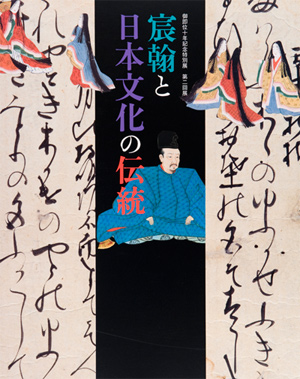| image | information |
|---|---|
 |
“Imperial Calligraphy and the Japanese Cultural Tradition” is the second in a series of special exhibitions at The Museum of the Imperial Collections (Sannomaru Shozokan) commemorating the tenth anniversary of the enthronement of His Majesty the Emperor. For this exhibition, we have been honored with the opportunity to exhibit Imperial properties and have worked in collaboration with The Archives and Mausolea Department, Imperial Household. The exhibition takes a dose look at the calligraphies of Japanese emperors from medieval times to the Edo period, mainly through the works of those emperors who left important marks on Japanese culture. At the same time, through the various contents of those writings, it will examine the conditions then existing in the courts and society at large and thus introduce the relationship between the Imperial Family and Japanese culture. In Imperial calligraphy, the writings by emperors celebrated as outstanding calligraphers are fine artworks in themselves. In content, moreover, they cover a broad range, taking such forms as journals, waka poetry, letters, and literary works. In particular, the journals are important documents through which we can learn about contemporary social conditions, and the careful records they provide disclose the history of our country. The waka form of poetry, on the other hand, developed tremendously thanks in part to the compilation of Imperial anthologies and has been handed down to the present as part of the Japanese tradition. The emperors were also active in a variety of other fields such as literature and the performing arts, while Imperial rites and ceremonies have been continued to this day as annual events that enrich court culture. The various types of art and culture that thus emerged and grew under the patronage of the emperors have led to the development of different motifs - the distinctively Japanese ambience of the four seasons, human emotions, and narrative themes - that have flavored our country’s culture with a beauty of refinement and splendor the Japanese refer to as miyabi This exhibition focuses mostly on the emperors who were cultural leaders of their times, such as Emperor Goshirakawa of the late Heian period, Emperor Fushimi, a celebrated calligrapher, Emperor Gomizunoo, a central figure in Kan’ei culture, and Emperor Gosai, who laid the foundations for the Higashiyama Collection. We hope that through this exhibition the viewer will ponder the depth of the scholarly and cultural attainments of the successive emperors and at the same time feel the history of the relationship between the Imperial Family and Japanese culture. |